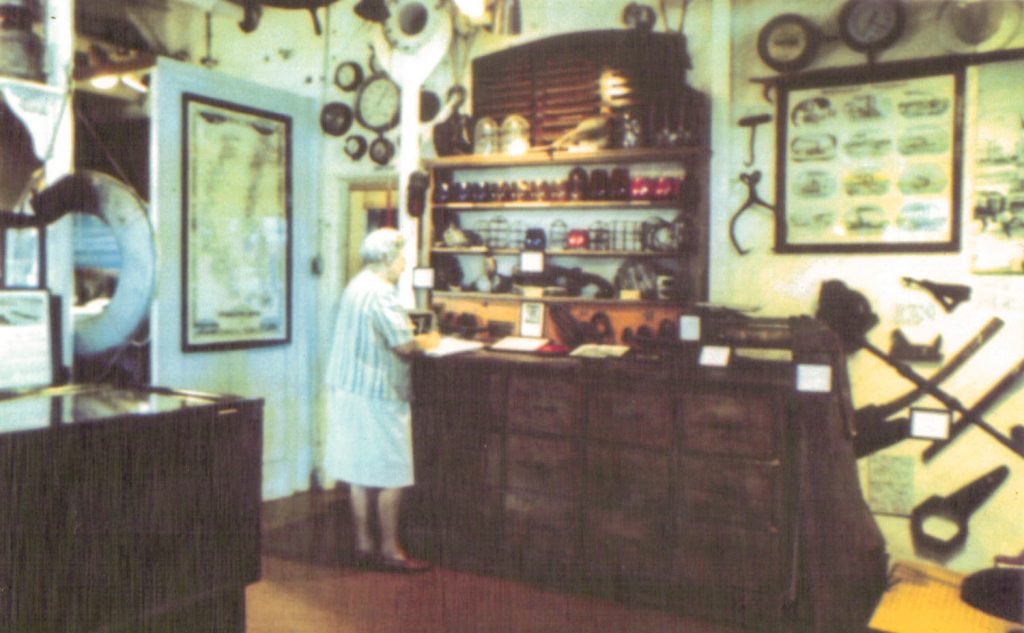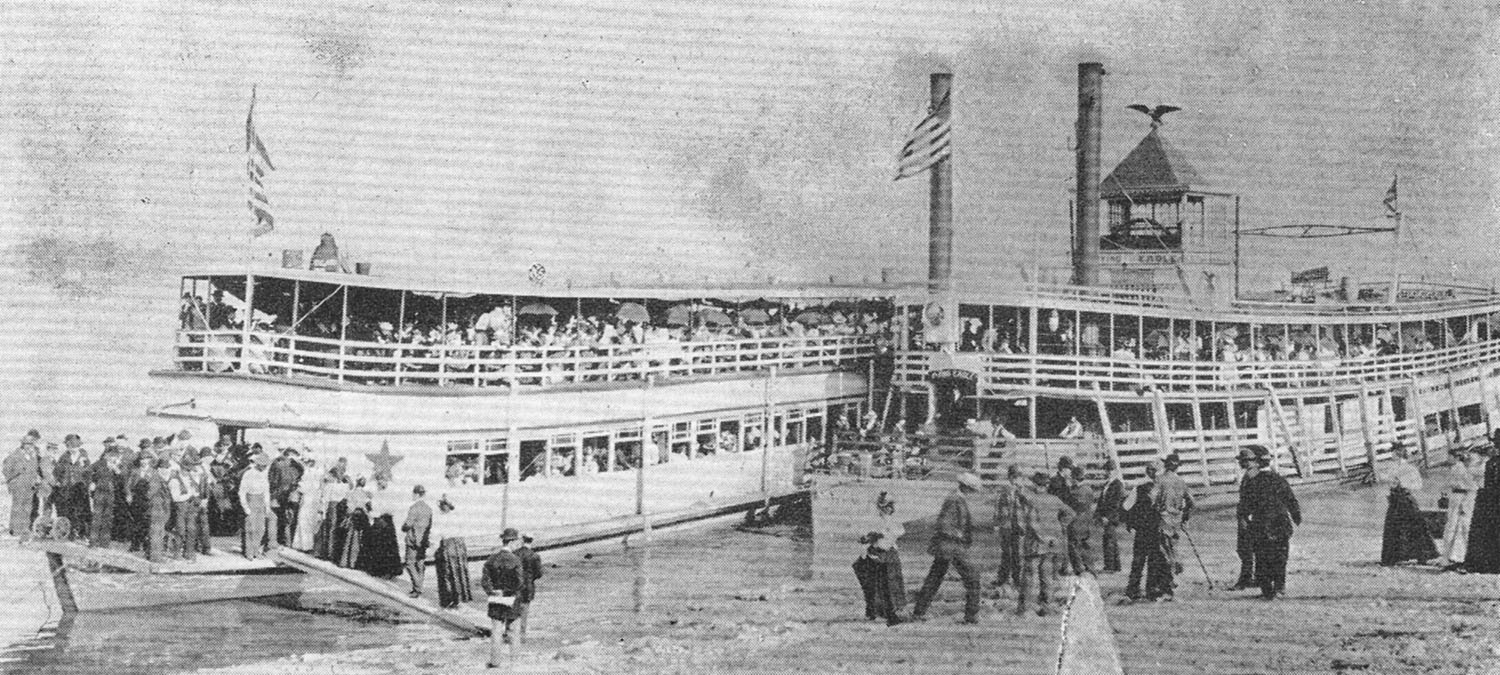Originally named Irene D, this former rafter was built in 1888 at Rock Island, Ill. It was constructed on a wooden hull that measured 133.5 feet in length by 29.6 feet in width, and with a depth of 4.8 feet; tonnage was listed as 142. In 1898, the boat was rebuilt as the Flying Eagle by Capt. Thomas Adams of Quincy, Ill., who had purchased it for use as an excursion boat.
Records of the Steamboat Inspection Service indicate that the sternwheeler had a good safety record, with the only accident reported being that of a deckhand, Manuel Davis, getting scalded by steam escaping from the safety valve on April 2, 1901.
On June 3, 1903, at 10:30 in the morning, the Flying Eagle departed the landing at Hannibal, Mo., with the excursion barge Little Gate, loaded with members of the Park Methodist Church, in tow. The boats proceeded upstream through the draw span of the Wabash Railway Bridge. Due to the high stage of water and a strong cross current, the paddlewheel and stern of the Flying Eagle struck the protection works of the upper end of the draw span. The two vessels topped around against the bridge pier. The engines of the steamboat were immediately reversed in an attempt to straighten up, but the Flying Eagle unfortunately backed sharply against the rocky river bank. The sternwheel was quickly reduced to splinters and the boat was rendered helpless. The situation went from bad to worse as the riverboat broke loose from the barge and sank in 40 feet of water below the bridge. The excursion barge then struck the bridge and turned on its side. All but 60 people escaped onto the upper works of the bridge. A majority of those who could not seek refuge on the bridge were pulled from the river by the Hannibal ferry boat and by skiffs from locals who joined the rescue mission. Three passengers and one crew member lost their lives.
At the time of the accident, Capt. Thomas Adams (owner of the boat) was in command. Capt. Frank Slater was on watch in the pilothouse, with Edward
Meals presiding in the engineroom; A. Roberts was the steward.
Reportedly, the unlucky vessel was the second steamboat to carry the name Flying Eagle. A previous boat was originally the sternwheeler Savanna, built in 1863 at Brownsville, Pa. Constructed on a wooden hull measuring 156 feet by 35 feet, the vessel operated between Pittsburgh and St. Louis, in command of Capt. Isaac Mason. This riverboat was heavily damaged in an ice gorge at St. Louis on December 12, 1876. During the spring of 1881, the sternwheeler was rebuilt and renamed Flying Eagle, operating in the St. Louis-St. Paul trade, under the command of Capt. Thomas Boland. The steamboat sank at St. Louis in 1888.

River Trivia
It was 50 years ago this spring, on the weekend of April 12–13, 1969, that the Midship Museum first opened to the public aboard the Becky Thatcher (formerly the steamer Mississippi) at the St. Louis levee. Designed and curated by beloved river historian Ruth Ferris (1897-1993), the museum contained dazzling displays of artifacts from the Eagle Packet Company, Goldenrod Showboat, Eagle Boat Store, Streckfus Steamers and other riverboat memorabilia.




